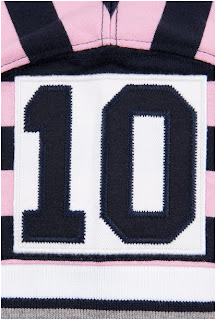If you want to commercialize your embroidery digitising designs and you are looking to make good and impressive revenue from it, you need to learn the secret of the trade. The big question is what designs sell and what will make people buy your embroidery digitising products? The answer is simple. You need to offer the rare blend of best designs and right price. At the same time, you need to come up with designs that are in tandem with the popularity meter.
Keep The Occasions In Mind
As Halloween is round the corner, there is a huge demand for embroidery digitising fabrics that have the “feel” of Halloween. So, you need to design such patterns that look befitting for Halloween costumes. For instance, you can make use of glow in the dark threads as they emit a bright light in the dark. No doubt, it is a big hit for all those who are looking to buy Halloween costumes.
So, if you wean to rev up your sales, you need to find the upcoming occasions and events for which people will be shopping. If you can design something that is in tune with the shopping need of people, your sales figure are likely to shoot higher.
Double Check Your Work
It is crucial to check the work before commercializing it. Always remember that it takes a lot of years to build a reputation and only seconds to get it destroyed. So, when you are working in embroidery digitising projects, you need to be sure that you are checking the work twice and may be even thrice. Embroidery is one such work that involves a lot of fine detailing.
Even after you have checked out all aspects diligently, a slight unwanted curve can make the stitches flawed. Not only this, when the embroidery is digitized, there is scope for even greater errors. So, you need to be on an alert and you must thoroughly inspect both the embroidery and the final output after digitization. The art of digitizing the embroidery needs skill of the highest order.
The fact that the embroidery technicalities differs based upon the quality and nature of fabric to which you will be etching the design makes it even more complex.
So, if you have the desire to become one of the embroidery digitising firms, you need to be thoroughly proficient in the field. The density of the stitches, the right stabilizers, the length of the stitch, the pull compensation, the underlay that is used are some of the key points that must be kept in mind. Failure to do so will lead to flawed output which is not going to be appreciated by people.
However, with polished skill and continuous practice, you will be able to excel in the field of embroidery digitising and become a name to be reckoned with.
Express Digitising is one of the ace embroidery digitising firms that has been in this field since a long time. They have been embroidering a lot of different fabrics and their work quality is immaculate. They are versatile as their designs portray immense variety and their rates are affordable too.
Keep The Occasions In Mind
As Halloween is round the corner, there is a huge demand for embroidery digitising fabrics that have the “feel” of Halloween. So, you need to design such patterns that look befitting for Halloween costumes. For instance, you can make use of glow in the dark threads as they emit a bright light in the dark. No doubt, it is a big hit for all those who are looking to buy Halloween costumes.
So, if you wean to rev up your sales, you need to find the upcoming occasions and events for which people will be shopping. If you can design something that is in tune with the shopping need of people, your sales figure are likely to shoot higher.
Double Check Your Work
It is crucial to check the work before commercializing it. Always remember that it takes a lot of years to build a reputation and only seconds to get it destroyed. So, when you are working in embroidery digitising projects, you need to be sure that you are checking the work twice and may be even thrice. Embroidery is one such work that involves a lot of fine detailing.
Even after you have checked out all aspects diligently, a slight unwanted curve can make the stitches flawed. Not only this, when the embroidery is digitized, there is scope for even greater errors. So, you need to be on an alert and you must thoroughly inspect both the embroidery and the final output after digitization. The art of digitizing the embroidery needs skill of the highest order.
The fact that the embroidery technicalities differs based upon the quality and nature of fabric to which you will be etching the design makes it even more complex.
So, if you have the desire to become one of the embroidery digitising firms, you need to be thoroughly proficient in the field. The density of the stitches, the right stabilizers, the length of the stitch, the pull compensation, the underlay that is used are some of the key points that must be kept in mind. Failure to do so will lead to flawed output which is not going to be appreciated by people.
However, with polished skill and continuous practice, you will be able to excel in the field of embroidery digitising and become a name to be reckoned with.
Express Digitising is one of the ace embroidery digitising firms that has been in this field since a long time. They have been embroidering a lot of different fabrics and their work quality is immaculate. They are versatile as their designs portray immense variety and their rates are affordable too.







